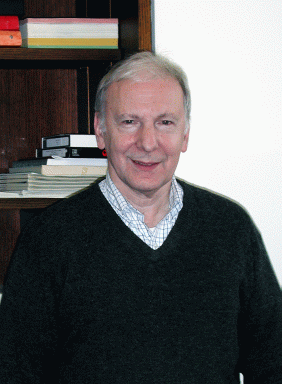|
HISTORY LECTURE by Robert Wald Department of Physics, University of Chicago on The History and Present Status of Quantum Field Theory in Curved Spacetime
Abstract: Quantum field theory in curved spacetime (QFTCS) is the theory of quantum fields propagating in a classical curved spacetime, as described by general relativity. Much of the basic formalism of QFTCS was developed by the late 1960's and was applied at that time to investigate particle creation in an expanding universe. Interest in QFTCS received a major boost from Hawking's 1974 analysis of particle creation by black holes, which showed that black holes "emit" a thermal spectrum of all species of particles. Unruh's subsequent analysis (intended to elucidate what an observer near the black hole would see) graphically demonstrated that "particles" cannot be a fundamental notion in QFTCS. During the past 25 years, major progress has been made in providing a mathematically satisfactory formulation of QFTCS, thereby overcoming the difficulties caused by the lack of a preferred vacuum state or a preferred notion of "particles". By the late 1980's, it was understood how to formulate QFTCS in a mathematically rigorous manner for a linear (i.e., non-self-interacting) quantum field. During the past decade, great progress has been made in the perturbative formulation of QFTCS for interacting quantum fields. Much of this progress is directly attributable to the importation into QFTCS of the methods of "microlocal analysis". It is now clear that perturbative QFTCS can be rigorously formulated in a entirely local and covariant manner and that it possesses many highly satisfactory properties, although a number of key issues remain open.
This History Lecture is one of the featured events of the South Eastern Analysis Meeting XXII which is taking place March 2 - 5, 2006 here at the University of Florida.
Created Monday, January 30, 2006. Please send comments/report problems to: www@math.ufl.edu Last update made Sat Feb 18 14:46:26 EST 2006. |
